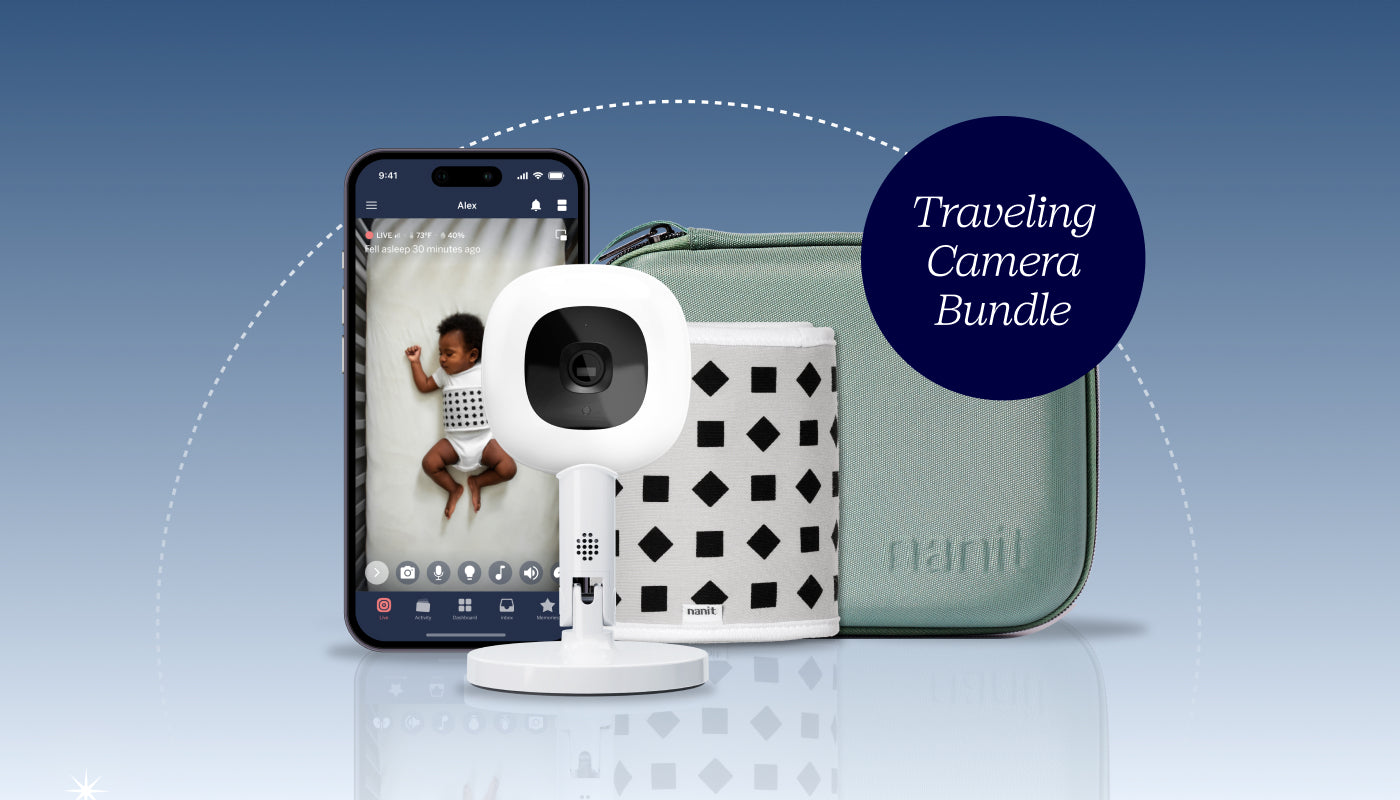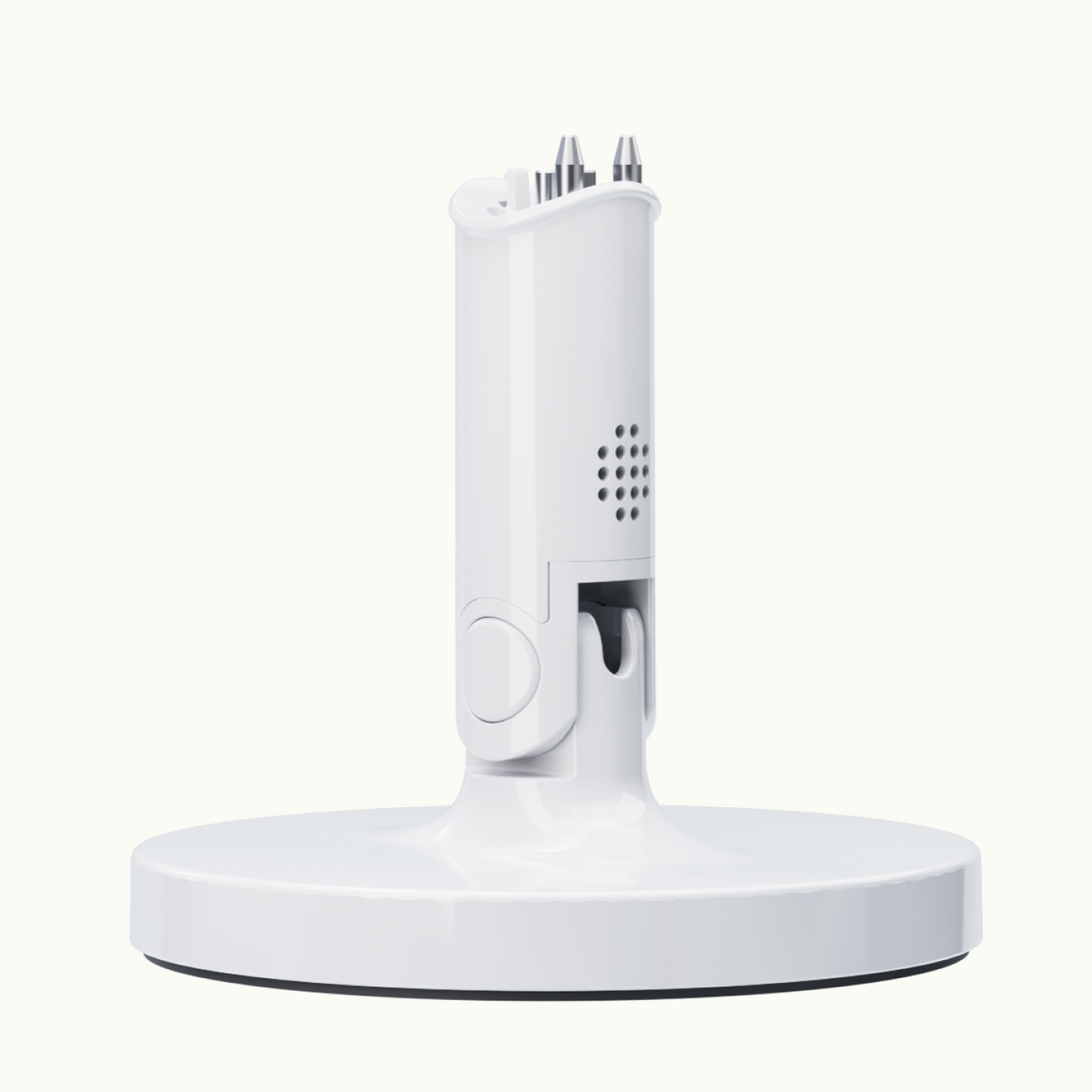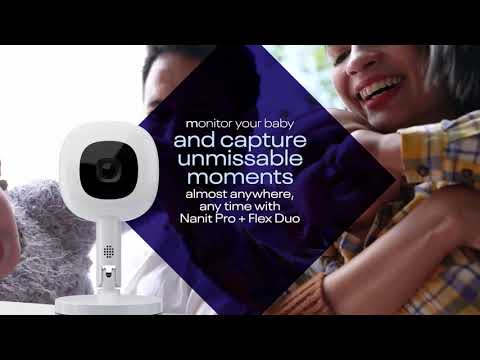Assaf Glazer, Natalie Barnett, Tor Ivry, Shaked Dovrat, Jesse Lax, Yanai Ankri and Haviva Veler.
Presented at the conference of the International Pediatric Sleep Association in Paris, April 2018
Introduction
Nanit has developed a system for analyzing infant sleep using computer vision technology, where a camera mounted over a crib is able to analyze a baby’s sleep without the need for a wearable device. This system has been shown previously to be accurate in determining sleep/wake (S/W) states when compared to actigraphy (Glazer, et. al., 2017). Highly specific algorithms are able to distinguish parental interactions as ‘out of crib visits’ (where the baby was taken out of the crib) or ‘check-in visits’ (where the baby stayed in the crib but was soothed by the parents). Previous reports of parental visits rely upon self-reporting by parents using parent sleep diaries. These parent sleep diaries can be inaccurate (Werner et.al., 2008) and cumbersome to implement and analyze. The Nanit system is able to record parental interactions without the need for manual reporting via a sleep diary. As babies get older, they start to consolidate their sleep and their need for parental intervention at night decreases (Mindell, et al, 2016). Many studies have shown this phenomenon in small cohorts (Galland, et. al. 2012). The aim of this study was to provide normative data on parental visits for babies ages 1-24 months using a large data set without the need for a parent diary.
Methods
Participants were current Nanit camera users in the USA, Canada, Europe and Israel who had given permission for Nanit to analyze their data. Data were collected on 2365 unique babies (1148 girls and 1217 boys) over 175 nights from October 2017-March 2018, for a total of 217,483 night sleep sessions analyzed. The babies ranged in age from 1-24 months. Only babies with more than 25 nights available were included in the analysis. Proprietary algorithms analyzed total parental interactions and then further classified interactions as either ‘check-in visits’ or ‘out of crib visits’ .
Results
At one month, the average number of total parental interactions was 3.6 times per night and the average number of times out of the crib was 1.8 times per night. By 5 months of age the average number of parental interactions had dropped to 2.6 times per night with the average number of times out of the crib being once per night. For all babies older than 13 months, 50% had no parental interactions at night and 75% were not taken out of the crib at night.
Conclusion
This is the first time that data have been presented on such a large cohort of babies to objectively measure parental interactions and the number of times a baby was taken from the crib during the night. We can clearly see a decrease in the number of parental interactions as babies start to consolidate their sleep with age where the majority of babies are able to sleep independently after 13 months without any parental interactions and 75% of babies after this age are not taken out of the crib during the night. With the development of computer vision, we are able to clearly classify parental soothing behavior when previously we have relied on manual reporting. Nanit can provide reliable data on large cohorts of babies and children, thus being able to accurately report ‘normal’ sleep values for various populations and also provide sleep data for different countries or different areas within a country. Nanit has the potential to revolutionize the understanding of pediatric sleep as our dataset increases exponentially and by accurately analyzing parental and infant behavior.

About the researchers
The authors include Assaf Glazer, Natalie Barnett, Tor Ivry, Shaked Dovrat, Jesse Lax, Yanai Ankri and Haviva Veler.

- Dr. Natalie Barnett serves as VP of Clinical Research at Nanit. Natalie initiated sleep research collaborations at Nanit and in her current role, Natalie oversees collaborations with researchers at hospitals and universities around the world who use the Nanit camera to better understand pediatric sleep and leads the internal sleep and development research programs at Nanit. Natalie holds a Ph.D. in Genetics from the University of New England in Australia and a Postgraduate Certificate in Pediatric Sleep Science from the University of Western Australia. Natalie was an Assistant Professor in the Neurogenetics Unit at NYU School of Medicine prior to joining Nanit. Natalie is also the voice of Nanit's science-backed, personalized sleep tips delivered to users throughout their baby's first few years.



